Black Friday Can Give You the Blues
“Black Friday”, the day after Thanksgiving Day is the kick-off to the holiday shopping season- it is also the start of what we like to call “fender bender frenzy”. Folks get caught up inthe hustle and bustle of holiday shopping and “crash”, you’ve been in an accident! It can really deflate your holiday spirit to come out to your car in the parking lot only to find that some other motorist has left their mark…a dent in the fender, a scrape along the door panel, or broken taillights…..not the holiday gift you were hoping for.
Don’t be a victim of “fender bender frenzy” by getting caught without the proper insurance coverage. Generally, even hit-and-run accidents are covered by your MA AutoInsurance policy under the Collision coverage. If when an unknown motorist inflicts damage, your car insurance policy typically covers the cost ofthe loss subject to your chosen deductible.
The best way to make sure you will be covered is to review your auto insurance policy with your agent. Your agent can confirm that you have all the necessary coverages you need to be properly insured. Vargas & Vargas suggests automobile drivers carry a $500 deductibles on their collision coverages. Call us today at 877.550.0025 and shop with confidence this holiday season!
Prepare Your Motorcycle for a Winter’s Nap
The autumn leaves are falling; the days are shorter, and there is a chill in the air all the preludes to the entrance of winter. Some of us have already experienced the first few flakes of snow! The time has come for preparing your motorcycle for winter storage. Of course, getting your bike ready for winter is more than just parking it in the corner of the garage and throwing a tarp over it till next spring. Experts suggest that you take the time to do a proper motorcycle winter maintenance program to maintain your bike’s peak performance. The following are some helpful tips in prepping your ride for a long winter’s nap; however you should always refer the bike’s maintenance and repair manual for the manufacturer’s suggestions.
First clean and wax your motorcycle. This will keep all painted surface and chrome parts protected from dust and moisture.
When you park the bike you should put pieces of plywood under each tire, Make sure that the entire bottom of the tires are sitting on the wood, store your bike on a stand if possible. This will protect the rubber from cracking or rotting. Don’t forget to check the tire pressure and if any tires are low inflate to the proper pressure.
Next, drain the oil and flush the crankcase. This will keep the corrosive deposits from building up over the years. Now is the time to also replace the oil filter. So too can old gasoline damage your bike’s engine. The sediments in old gasoline can plug carburetors and fuel lines. Avoid this by either draining all fuel from the tank, carburetors and the fuel lines.
Inspect the wiring by sliding you fingers along all the wiring you can see, and feel for cracks or breaks in the insulation. If you find any damaged casings repair or replace them. Make sure all the connectors are tight and all are free of corrosion. Disconnect and remove the battery and store it in a warm vented place sitting on a piece of plywood to catch any acid leaks. The battery will discharge over the winter months and this can cause the battery to freeze and crack. Clean the battery post and the battery cables. Use fine steel wool or a battery cleaning tool. Once the posts are clean apply petroleum jelly. This will not affect the cable connections when you hook up the battery in the spring.
Prevent rust from forming on the chain or the shaft drive by lubricating with the manufacture recommended oils. Before you lube it, make sure the chain is clean. Any dirt left on the chain will cause the chain to wear faster and speed up the wearing of the sprockets
Take a look at the brakes for any wear or damage to the pads or the rotors. Make sure you top up the brake reservoir. Replace the air filter and wipe out the container it fits in if it has one.
Before covering your bike, make sure you plug the intake and exhaust so critters cannot get in and set up house!
Most insurance carriers offer special rates for winter storage of your motorcycle so remember to let your insurance agent know your bike is off the road for winter.
Take care to prepare your bike for winter storage and as soon as the snow melts in spring, she will take care of you on the open road!
And when it comes to all of your insurance needs, whether automobile insurance, homeowners insurance, business or life insurance, Vargas & Vargas Insurance is always available to answer any of your questions.
Have a Stress-Free Thanksgiving
First things first:
- Confirm you guest list, and any weekend house guests
- Determine what recipes you are going to bemaking. Some important things to consider, or remember: Do your dishes gowell together, flavor-wise? What dishes can be prepared ahead?
- Can you cook all the dishes in your stove/oven? Run through thecooking process, noting when things are on the stove, or in the oven (and atcwhat temperature), and that you have space for it all.
- Once your menu has been finalized, determine what can be made inthe few days before Thanksgiving to save time, such as pies, casseroles, stuffing,even peeling the potatoes and leaving them to soak in a water bath.
- Next create a timeline/checklist for the day of Thanksgiving: whenthe turkey needs to go into the oven,the side dishes that still have to be made, and which ones that have been madeahead which need to be heated. The end goal of all the food being ready toserve, at the proper temperatures, at the same time.
- Consider the beverages you will serve. Will you offer a fullystocked bar, or simply just soft drinks, beer, and wines. Make sure you haveenough liquor, water, and mixers for the number of guests you’re expecting, andhave the proper utensils and ingredients – don’t forget cocktail napkins,lemons and limes!
2 weeks before:
- With your menu, go through your serving dishes and utensils. Marrytogether each recipe with the dish you want to serve it in and the utensil itwill be served with, labeling each set with a post-it. Do the same with yourcooking utensils, making sure you have a turkey baster and kitchen twine, andcheck to make sure you have enough containers/tin foil for storing leftovers.
- Consider your centerpieces and décor. Determine how you want toset each place: Dinner and salad plates? Bread and butter plates? How manypieces of flatware? Just a fork and knife, with a dessert spoon on top? Don’tforget about glassware: for water, white wine, red wine, mixed drinks, kidsdrinks.
- Make sure the dishware and glassware you are using is clean.Polish any silver that you may be using.
- For centerpieces, think about where you want to put candles, andwhat kind. Remember to never leave lit candles unattended!
- Make sure you have linens for the table(s) – not just the diningtable, but bar table(s), serving table(s), or tables of appetizers, whateveryou are using — and that they are clean and pressed. If not, you shouldarrange that now.
- Write up a shopping list based on your menu. Create a Grocery listdivided by department such as produce, dairy, spices, storage containers, kitchen tools, etc. Then have shopping listsfor any other errands you may have e.g. Liquor store. This will help to makeyour shopping trip less chaotic and overwhelm in
- Write up a shopping list based on your menu. Create a Grocery list divided by department such as produce, dairy, spices, storage containers, kitchen tools, etc. Then have shopping lists for any other errands you may have e.g. Liquor store. This will help to make your shopping trip less chaotic and overwhelming.
The week before:
- Remind your guests that you’re looking forward to sharingThanksgiving with them, and confirm when they will be arriving.
- Prepare! Is your bathroom organized and stocked? Do you have roomin the freezer for extra ice needed for drinks? Clear out the refrigerator tomake room for dishes. Straighten up around the house.
- Check your lists and what you have in your pantry. Do you havecocktail napkins, toothpicks, paper towels? Coffee, tea, milk and sugar toserve with dessert?
- Organize your bar and chill any beverages that need to be cold.
The Week of Thanksgiving
Monday and Tuesday:
- Begin defrosting your turkey if it is frozen.
- Make your pies, cranberry sauces, and other dishes that can hold forfour days.
- Set your table and decorate the spaces where yourguests will be.
- Begin chopping vegetables for cooking, and slicing lemons andlimes for the bar. Are your butter dishes ready, and salt and pepper shakersfull? If you are brining your turkey, you can make the brine, too.
Wednesday:
- Continue chopping and prepping, assembling the stuffing and otherdishes that can be refrigerated overnight.
- Do a final run through of your lists, recipes, and check your pantrymaking a final grocery run if necessary.
- Determine when you need to get up in order to preheat the oven,and get the turkey in so it will be cooked at the proper time.
- Get a good night’s sleep.
Thanksgiving Day:
- Do a final sweep of your set table and bar area, set the servingdishes in a place where they can all sit before being served, preparing acreamer and sugar for coffee and tea.
- Prepare your appetizers.
- Cook and enjoy the time with your family and friends!
Vargas & Vargas wishes you and yours a Safe and Happy Thanksgiving!
Is Your Vacant Property Covered?
Most insurance policies contain a vacancy provision, a Massachusetts homeowner’s policy does have a vacancy exclusion that typically applies after a home has been empty for 30 to 60 days when the policy starts removing coverage.
Click here to view the rest of this blog on Patch Media.
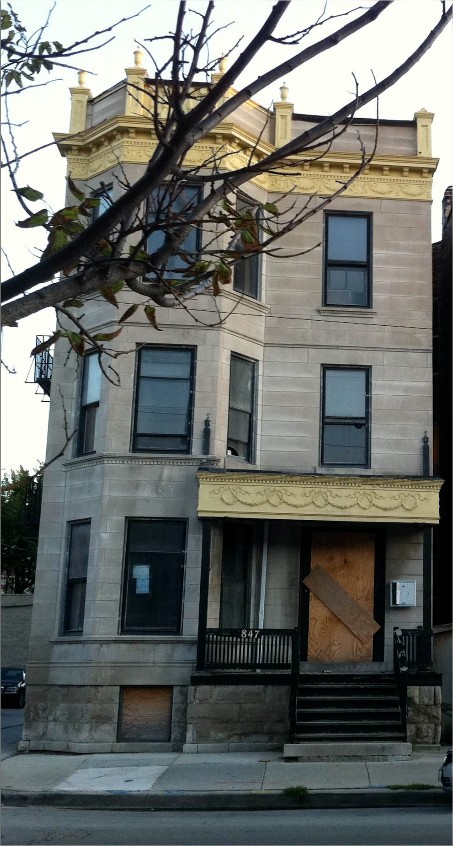
For more information regarding coverage on your vacant or unoccupied properties call Vargas & Vargas Insurance Agency, your local independent insurance agent.
Why a Tuesday in November?

It has been this way in America since 1845, but how did it come to be?
It may seem to be a random choice today but back in the America of the 1800’s it made great sense. Back then most Americans made their living in rural areas by farming and ranching. As a result Congress needed to determine the most convenient month for farmers and those living in rural areas to get to the polls. Spring and Summer months were dedicated to preparing fields and planting crops. Whereas early November was a time when the harvest was complete and before the harsh winter weather set in that would have prevented travel by horses and buggy over the unpaved dirt roads of the day.
So November was chosen due to the harvest cycle – but why not then make voting day on November 1st? November 1stis a Holy Day of Obligation in the Roman Catholic Church (All Saints Day). In addition, many businesses tallied their sales and expenses and did their books for the previous month on the first of each month. Congress feared that an unusually good or bad economic month might influence the vote if it were held on the 1stof November.
So November 1st is out but why not the first Monday of November? As many folks needed to travel great distances,often requiring and overnight journey to reach their closest polling station. It was therefore determined the optimum voting day be on a Tuesday to avoid the need to travel on a Sunday, the day of rest reserved for attending religious services.
So, in 1845 the US Congress made the law, mandating that the presidential elections would be held every four years on the first Tuesday after the first Monday in November.
Listen to a NPR radio story on the history behind Tuesday voting HERE.
What do you do in an Earthquake?
Did the building just move? Yes, that was a tremor you felt recently when a quake of 4.0 was recorded in New England. Although 800 of them happen a year, it is rare for those of use in New England to feel the shake of an earthquake. It took me awhile to realize it was an earthquake, at first I thought it might be some kind of large truck rumbling by, or something like that. Within seconds of feeling the tremor, friends on Facebook and twitter with posting comments, many of which were “was thatan earthquake?” We just don’t think about earthquakes in this area….but clearly they do happen! So, when one hits what should you do?
|
If you are indoors when shaking starts: “DROP, COVER AND HOLD ON.” If you are not near a strong table or desk, drop to the floor against an interior wall and cover your head and neck with your arms. Avoid windows, hanging objects, mirrors, tall furniture, large appliances and cabinets filled with heavy objects. Do not try to run out of the structure during strong shaking. If you are downtown, it is safer to remain inside a building after an earthquake unless there is a fire or gas leak. Glass from high-rise buildings does not always fall straight down; it can catch a wind current and travel great distances. If you are in bed, stay there and cover your head with a pillow. Do not use elevators. If you use a wheelchair, lock the wheels and cover your head. If you are outdoors when shaking starts: Move to a clear area if you can safely walk. Avoid power lines, buildings and trees. If you’re driving, pull to the side of the road and stop. Avoid stopping under overhead hazards If you are on the beach, move to higher ground. An earthquake can cause a tsunami. Once the earthquake shaking stops: Check the people around you for injuries; provide first aid. Do not move seriously injured persons unless they are in immediate danger. Check around you for dangerous conditions, such as fires, downed power lines and structure damage. If you have fire extinguishers and are trained to use them, put out small fires immediately. Turn off the gas only if you smell gas. Check your phones to be sure they have not shaken off the hook and are tying up a line. Inspect your home for damage. For more information on what to do before and after an earthquake hits click here! And if you have any questions about your Massachusetts Earthquake Insurance, call us at 877.550.0025. |
|
Fallen Leaves Can Leave You Liable!
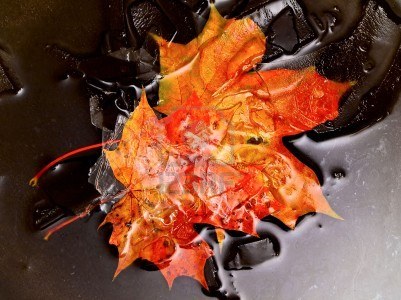
There is no doubt that the beauty of the autumnal leaves is a highlight of the season. But such splendor can mask danger. Those same beautiful leaves can be dangerous once they hit the ground! Fallen leaves can cause slippery conditions because they contain a large amount of water. Fall is also a time when we experience the first frost,which can add to the slippery surfaces. As the temperature drops, the wet leaves can freeze with a thin layer ofice creating hazardous conditions.
In addition, during the fall, the sun rises later, sets earlier, and often brings foggy days. This limited exposure to sunshine does not allow for wet/frozen leaves to dry out and once well-lit pathways and walkways are now dim. Allcan contribute to a greater potential for accidents
School is in session and children are walking out and about, your postal worker delivering your mail, and of course come Halloween “trick or treaters” will be traversing your property. These are all potential liability claims should they slip and fall on your property. It only takes one false step to become the victim of a “slip-and-fall”accident.
Avoid any chance of injury to yourself or others by clearing walkways and driveways of all fallen leaves, and ensure that they are well lit. If you currently use landscape lighting on a timer, be sure to reprogram your timers in anticipation of daylight savings time.
Protect your family and yourself against these all too often occurring accidents byreviewing your Massachusetts homeowner’s insurance coverage with your agent today. Call us at 877.550.0025
How to Care for your Lawn and Landscaping Before Winter
.jpg)
As the thermometer drops, and autumn arrives, it is time to get your lawn and garden ready for the cold weather ahead. Following these few tips will help your lawn and garden come up green in the spring!
Continue Watering!
One misconception during winter is that grass and plants stop growing, die, and don’t need watering until spring. This couldn’t be further from the truth. Once it snows, the melting snow will be sufficient to keep water levels in colder months. The grass becomes dormant and doesn’t have a quick growth output in the winter, but it still needs moisture.
Keep Mowing!
Grass should be mowed until it slows in growing. The length of your grass is vital in keeping it healthy during its dormant stage. If the grass is too short the cold wind can reach the roots and cause dead sections later in the season.If the grass is too long, the blades can get mold or disease. Stop cutting grass after you notice it stop growing and leave it for a few weeks. This should ensure a good length.
Rake leaves and other debris!
Grass still needs access to sunlight during the winter months. Rake up leaves and debris throughout the season to ensure grass receives ample light and air. Mold, and disease, is common in winter months when leaves and debris are left over grass. Do not leave trash bags, trash cans or other heavy items on grass for long periods of time as well.
If your garden includes a lawn then the early autumn time period is the best time to re-seed, to fertilize, and to add lime
It’s important that you follow the instruction on your spreader when adding fertilizer and lime and amend your soil according to whatever nutrients you need to put back into the ground. Re-seeding your lawn with new grass seed is fairly simple and can be done by hand if your lawn is not too large. Take a soil sample to your local garden supply shop to have the ph tested, and to get their advice on the proper amendments the sail my need. Don’t forget that your plants, shrubs, and bushes can also benefit from an application of fertilizer. Use a slow-release fertilizer and follow the directions on the package to ensure you apply the correct amount.
Prune trees and shrubs!
This will ensure that the plants will come back healthier and fuller in springtime. Every bush or shrub has a slightly different pruning method so it’s best to do a little research on how much material to cut off and where in the branch formation you should cut.
Seal pavers, natural stone, etc.
Before sealing, check to see if new sand is needed in between the pavers to keep water from reaching underneath the walkway. Check your driveway and see if it is in need of resealing if the current surface is cracked, crumbling, or is in general disrepair.
Fall is a great time to plant a new street tree!
Planting a tree near your home increases property value, shades your home during the summer months, and just makes for a better quality of life.
Preventative maintenance on your lawn will shield it from disease and harmful cold as the winter months set in. Consider mulching plant beds and landscaping areas to give an extra barrier against cold and harsh winter winds. Taking the time now to prepare your yard for winter will result in your lawn and garden coming back better and fresher in the spring!
Contact Vargas & Vargas Insurance for an of your auto insurance, home insurance, business insurance, Life insurance or Tax services.
Protect Your Family from Mold

Mold exists everywhere, both indoors and outdoors. We are exposed to mold daily, and it is
virtually impossible to live in a completely mold-free setting. However, it is the prolonged and excessive exposure to mold that can lead to serious health issues. Exposure to mold can cause skin irritations and rashes. Some people will also begin to experience chronic respiratory problems, difficulty breathing, blurry vision, runny noses and irritable throat problems. More severe allergic symptoms include headaches, fever, headaches, vomiting and dizziness. Mold releases toxic spores into the air which, when ingested, can exacerbate existing allergies or respiratory conditions. Some forms of mold can attack your immune system and potentially damage your liver, blood and kidneys and even your brain. Mold has even caused death, infecting infants’ lungs and causing respiratory bleeding. Children, the elderly and generally anyone with a lower immune system are at higher risks of health problems from mold.
Mold is a silent offender that is not easily noticed in your home. One reason is that it is often lurking out of plain sight.Mold can be hidden underneath the floors, in the walls, behind the ceiling, or lurking deep in the carpeting. It is not until you smell that pungent musty odor of mold that you realize there is a problem, and by then it will have already spread and done significant damage.
However, there are some preventive measures that can be made to prevent this from happening. Be aware the level of moisture present in your home. Mold needs moisture and dampness to survive. This can be flooding in your house but mold can also occur as a result of less dramatic events such as overflowed drains/toilets, through chimneys, or even poorly ventilated showers. The best way to prevent mold is to make sure that all sources of moisture—leaking pipes, clogged gutters, cracked bathroom tiles etc.—are taken care of accordingly. Install ventilation fans in bathrooms to handle excess steam and moisture created while showering. If your basement tends to be damp, invest in a dehumidifier to help pull excess moisture out of the air.
Despite all of your efforts if you do encounter mold in your home, don’t try to rectify the problem yourself. Without experience, you could aggravate the mold, causing it to release even more dangerous toxins in the air. Instead, call a professional certified water damage and restoration company to help you eradicate mold and make your home a cleaner, safer place.
Vargas & Vargas Insurance is committed to helping you and your family. Questions about if your home is covered in the case of a flooding?Call us today at 877-550-0025.
Getting your Fireplace or Wood Stove Ready
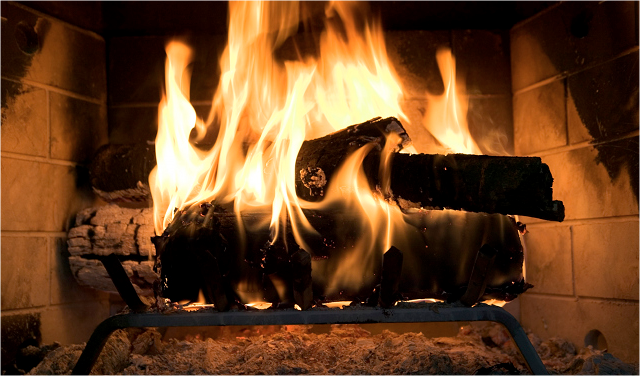
When there is a chill in the air is there anyone that doesn’t enjoy a blazing and crackling fire to warm their home? Be it,fireplace, wood stove, or pellet stove there is something so cozy and inviting about a fire. But to ensure a safe experience it is important to have all your chimney components evaluated and cleaned on a yearly basis or after burning a cord of wood, whichever comes first.
Fires built in fireplaces or wood stoves leave a gummy residue, called creosote, which can stick to the lining of your chimney. Creosote is a byproduct of burning wood, pellets, or coal and is created by soot, smoke,gases and other particles. When you burn wood to produce heat, gasses are produced that do not efficiently burn away .These gases now condense into liquid form. The liquid sticks to the inside of your chimney walls and/or liner. Over time it dries in the form of creosote. Insidiously, it continues to build up, layering on like a stalagmite, on the surface of your chimney liner or your flue tile every single time you and your family enjoy a fire. This is a highly flammable substance that can quickly erupt into a blazing chimney fire if subjected to a high enough temperature. That is why it must be removed periodically.
Hiring a chimney sweep is the traditional way to clean the inner surface and restore safety to the home. Chimney sweeps are trained to determine whether chimneys are structurally sound and whether they need to be cleaned. They will make sure the chimney is up to code, especially important in older houses, and make sure there are any birds or animals in the chimney, or anything that would block the flow of smoke. They also check that there’s no water coming into your home.
How Do I Prevent Creosote Build-up?
There are steps you can take at home to reduce creosote buildup and the risk of a chimney fire. Foremost is picking dry wood to burn. Dry wood will appear gray on the surface and have cracks on the end. Don’t throw pizza boxes or other trash in the fireplace because it causes a thicker smoke, which lowers the temperature in the chimney. While many people use a newspaper to start a fire, it is recommended that a fire log or fire starter should be used instead. Reduce the risk of a spark flying out o the fireplace, use a screen and stay in the room while the fire is burning. Also install and or check existing smoke detectors, carbon monoxide detectors and fire extinguishers to ensure all are in working order.
Chimney maintenance is a priority for your property, as harmful gases can build up inside the flue. Lethal carbon monoxide also builds up inside the flue, and if there’s damage to the inside of your chimney, this can seep in to your home.Have you chimney checked by a qualified tradesman regularly to ensure your family’s safety.
For information on ensuring your home is covered in case of a chimney fire, contact Vargas & Vargas at877.550.0025
Bushels of Fun
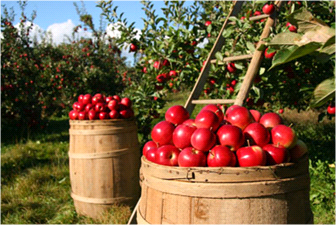
New England’s apple orchards today would have made Johnny Appleseed proud. While 2,500 varieties of the King of Fruit are grown throughout the U.S., more than 50 of them come from our very own backyards. Additionally, the Fruit Grower News reports that this year’s apple crop will be over 200 million bushels!
Picking apples:
Know which apples are ripe. Apples that are ready to be picked will be crisp and firm. Also, apples ripen from the outside of the tree towards its center.
Red Delicious apples are the first type to ripen. You can tell one is ripe when the center closet to the stem is green and no longer yellow. Also, it is a good idea to leave the stem on the apples; it helps them stay fresh longer!
Place them gently into the basket. You do not want your apples getting bruised. It makes them go bad more quickly.
Storing apples:
Keep them in a cool place. While a cold basement is ideal, a refrigerator’s fruit/vegetable drawer works well, too. Most apples can last for several weeks, but their shelf life can vary based upon their kind and how ripe they were when picked.
Wait to wash apples until just before you eat them. This will help them stay fresh longer.
Eating apples:
From apple strudel and apple crisp, to, of course, homemade apple pie, apples are arguably Americans’ favorite comfort food. Food Network is a great resource for lots of tasty (and healthy) apple recipes.
So, where should you go to pick your bushels of apples this season?
Apple Picking Boston provides maps, addresses and websites to apple orchards throughout Boston, Eastern Massachusetts and Southern New Hampshire. Additionally, Yankee Magazine ranks some of the region’s best orchards.
Vargas & Vargas Insurance cares about protecting the community and its people every season of the year. Call and speak with one of their friendly agents today at 877-550-0025 to learn more about how they can help you get the coverage you deserve at a price you can afford.
Earthquake Hits Massachusetts!

We usually worry more about hurricanes than we do earthquakes here in New England. But just this month, two small earthquakes were recorded off the coast by experts at Boston College’s Weston observatory. In fact, during an average year, 30 to 40 earthquakes strike New England, with a major earthquake striking New England every 500 to 900 years, bookmakers would say the odds of one happening tomorrow are 1 in 255,500. That’s better than the odds of being hit by lightning this year, 1 in 700,000, or of getting a royal flush in a game of five-card stud, 1 in 649,740.
So how much does a basic homeowner’s policy cover should you become a victim of an earthquake? Well, the truth is your Massachusetts homeowner’s policy does not cover what is referred to as “Acts of God”, which include earthquakes, hurricanes, tornadoes, floods, or any other natural disaster. On August 23, 2011 a 5.8 earthquake struck the Washington, D.C. area and many homeowner’s found that the unusual incident was not covered by their insurance policies. According to the Insurance Information Institute, the August 23, 2011 earthquake may have caused $200 million to $300 million in damage across the East Coast.
Does this mean that you will be left to pay out-of-pocket costs in the event that your home is damaged by an earthquake? The good news is no! You need not be financially burdened with potentially overwhelming costs of post earthquake damages. Provided you purchase a rider on your homeowner’s policy to cover you. It’s actually not very expensive to buy a rider to your existing coverage. In many cases, the cost may only be $100 – $200.
At Vargas & Vargas Insurance, we want to help keep you informed and aware of the importance of Earthquake Insurance and the risks of not having such a policy. Contact us today to find out more!
Strip Down and Protect Your Asset!
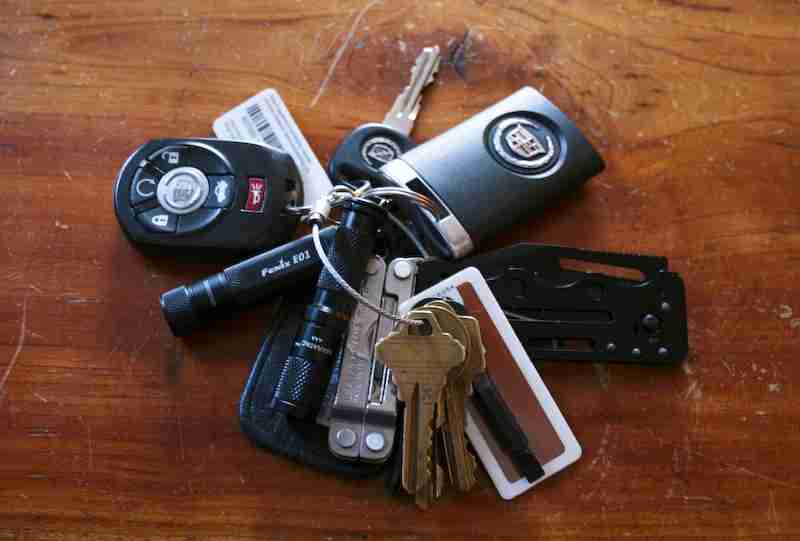
Your vehicle is essential to your daily life; you use it to get to work or school, you use it to run errands, and to take you to social events. Your car is a valuable asset; you would be lost without it, your freedom of movement tethered. That is why Vargas & Vargas wants to help you do everything in your power to protect it. However, you may not be aware that you have a few habits that could be damaging your vehicle.
Here are a few simple ways to protect your car from wear and tear:
Strip Down!
Keep your key chain to the essentials- the weight of a heavy key chain can actually pull on your ignition and cause problems with start up? So, get rid of old keys and heavy decorative additions to your key chain and strip down to contribute to your car’s longevity.
Lose the Junk in Your Trunk!
Avoid the pitfall of throwing things into your trunk and forgetting about them. That extra weight of a full trunk drags on your car wearing it down and costing you more money in gas. At the end of the day, take a look inside the vehicle and in the trunk be sure you aren’t carrying around unnecessary weight.
Stay Hydrated!
We have all done it…waited till you are riding into gas station on fumes. But it’s important to make the effort to stop and fill up BEFORE you see the fuel gauge on “E”! Letting your car run on empty can cause damage to your engine over time.
Handle with Care!
Treat your care with a little T.L.C.-Change gears with care. Hastily slamming your car into park or into reverse without coming to a complete stop is detrimental to your transmission. Be sure to come to a complete stop before shifting gears and your car and its passengers will thank you!
Be Prepared!
Be prepared and ensure that you are properly insured with a Massachusetts Auto Insurance policy. No matter how well you take care of your vehicle, the only thing that will protect you from the unexpected is your Massachusetts car insurance. Protect yourself, your car, and your passengers by consulting your MA Insurance agent to make sure you have adequate coverage.
Follow these few simple guideline and you and your vehicle will live happily ever after! For more information on MA Auto Insurance contact us at 1-877-550-0025! Vargas & Vargas Insurance can tailor an auto insurance policy to ensure you have the coverage that fits your budget.
September is Apple Month!

September has been declared “Apple Month” by Governor Deval Patrick and the state legislature. September sis also the month that Apple is expected to launch the iPhone5…so to honor both the apple and Apple we have compiled some Fun Facts you may not know about apples and Apple Inc!
1. Although apples are thought of as “All American”, apples originated in central Asia, on the land between the Caspian and Black Seas.
2. Apple was founded as a partnership on April Fool’s Day 1976 by three people who originally worked at Atari: Steven Gary Wozniak (1950- ), Steven Paul Jobs (1955-2011), and Ronald Gerald Wayne (1934- ). Apple was incorporated on January 3, 1977, without Wayne, who sold his shares back for $800.
3. It was the Pilgrims that planted the first apple trees in the United States and since then it has become the second most productive fruit in the United States and is grown in all 50 states! Prior to that the crabapple was the only apple native to North America.
4. Contrary to popular belief Apple Computers didn’t start in a garage, it started in a bedroom in Los Altos.
5. In colonial time, apples were called winter banana or melt-in-the-mouth.
6. Apple-1 with the tagline ‘Byte into an Apple’ was the first personal computer to be released by Apple which was designed and hand built by Wozniak. It was sold for $666.66.
7. Johnny Appleseed was the nickname for John Chapman, a kind and generous American pioneer born in 1774 who planted apple seeds in Ohio, Indiana, and Illinois.
8. The very first Apple logo was designed by Ronald Wayne and depicts Isaac Newton sitting under an apple tree when he discovered gravity by an apple falling on his head; it has a poem all around its border. (Newton… a mind forever voyaging through strange seas of thought.) The logo was redesigned in 1977 by Ron Janoff to the bitten apple logo we know today.
9. Apples were the favorite fruit of ancient Greeks and Romans. Archeologists have found evidence that humans have been enjoying apples since at least 6500 B.C.
10. Steve Jobs also created a company called ‘Pixar’ which was later bought by Disney, making him the largest individual shareholder of Disney.
11. The largest apple picked weighed three pounds.
12. Before coming up with the name iPod, Steve had already decided its tagline as “1,000 songs in your pocket.”
13. Apples are a member of the rose family and 2,500 varieties of apples are grown in the United States.
14. The name “Macintosh” was inspired by a sticker on an apple.
15. Contrary to popular belief, there is no mention of an apple as the forbidden fruit in the Bible. It is referred to as “fruit from the Tree of Knowledge” with no specification as to which kind of fruit. It was Hugo Van Der Goes who first implicated the apple as the forbidden fruit in his 1470 A.D. painting, The Fall of Man. After that, it became popular to depict the apple as the forbidden fruit.
16. Steve Jobs dropped out of College after one semester.
17. Apples harvested from an average tree can fill 20 boxes that weigh 42 pounds each and it takes about 36 apples to create one gallon of apple cider.
18. To raise capital for their new company, Steve Jobs sold his Volkswagen van and Steve Wozniak sold his Hewlett-Packard scientific calculator for $500.
19. The old saying, “An apple a day, keeps the doctor away.” This saying comes from an old English adage, “To eat an apple before going to bed, will make the doctor beg his bread.
20. Apple stores each sell an average of $93,150 worth of products every day, which is equivalent to $3,900 an hour or $65 a minute every day of the year.
Vargas & Vargas Insurance hopes you enjoyed this fun little comparison of Apples to Apple in honor of September “Apple Month”!
Protect Your Family from Mold

Mold exists everywhere, both indoors and outdoors. We are exposed to mold daily, and it is virtually impossible to live in a completely mold-free setting. However, it is the prolonged and excessive exposure to mold that can lead to serious health issues. Exposure to mold can cause skin irritations and rashes. Some people will also begin to experience chronic respiratory problems, difficulty breathing, blurry vision, runny noses and irritable throat problems. More severe allergic symptoms include headaches, fever, headaches, vomiting and dizziness. Mold releases toxic spores into the air which, when ingested, can exacerbate existing allergies or respiratory conditions. Some forms of mold can attack your immune system and potentially damage your liver, blood and kidneys and even your brain. Mold has even caused death, infecting infants’ lungs and causing respiratory bleeding. Children, the elderly and generally anyone with a lower immune system are at higher risks of health problems from mold.
Mold is a silent offender that is not easily noticed in your home. One reason is that it is often lurking out of plain sight.Mold can be hidden underneath the floors, in the walls, behind the ceiling, or lurking deep in the carpeting. It is not until you smell that pungent musty odor of mold that you realize there is a problem, and by then it will have already spread and done significant damage.
However, there are some preventive measures that can be made to prevent this from happening. Be aware the level of moisture present in your home. Mold needs moisture and dampness to survive. This can be flooding in your house but mold can also occur as a result of less dramatic events such as overflowed drains/toilets, through chimneys, or even poorly ventilated showers. The best way to prevent mold is to make sure that all sources of moisture—leaking pipes, clogged gutters, cracked bathroom tiles etc.—are taken care of accordingly. Install ventilation fans in bathrooms to handle excess steam and moisture created while showering. If your basement tends to be damp, invest in a dehumidifier to help pull excess moisture out of the air.
Despite all of your efforts if you do encounter mold in your home, don’t try to rectify the problem yourself. Without experience, you could aggravate the mold, causing it to release even more dangerous toxins in the air. Instead, call a professional certified water damage and restoration company to help you eradicate mold and make your home a cleaner, safer place.
Vargas & Vargas Insurance is committed to helping you and your family. Questions about if your home is covered in the case of a flooding?Call us today at 877-550-0025.
Green & Lean Coffee Beans?

Everyone from the ABC News to Dr. Oz is talking about this new “magical” supplement. Green coffee beans are basically unroasted coffee beans that are ground up and used in dietary powders, or made into an extract both of which are sold on the open market as health supplements.
The excitement surrounding green coffee bean extract comes from a recent study by the University of Pennsylvania that revealed that participants given green bean coffee extract lost an average of 17 pounds, and a 16Þcrease in their body fat. Researchers also found participants were able to lose weight, even despite the fact that they did little exercise, and ate more than normal. The participants of the study consumed on average about 2,400calories daily and in their exercise routines burned roughly 400 calories.
Apparently, coffee beans have a lot of chlorogenic acid, a compound that is known to help boost the body’s metabolic function. Once the beans were roasted the concentration of chlorogenic acid dissipates. Scientists also speculate green coffee bean extract may assist the liver to halt the absorption of fat. This not only aids in weight loss, but also reduces cholesterol, lowers blood pressure, and improving circulation.
As is the promise of all these benefits is not enough, that participants have no reported side effects. Thus, the “Green Lean Coffee Beans” have become a hot topic of discussion.
So, next time you walk into your local coffee shop…you’ll have to consider if want your coffee Hot, Iced, or Green?
Vargas & Vargas Insurance is
dedicated to helping Massachusetts’ communities. For questions regarding
home, auto, life insurance and more, call one of our agents today at
877-550-0025.
Know what Your Homeowners Policy Covers
It’s a good idea to check exactly what your homeowner’s insurance policy covers. As they say, the devil is in the detail, and this can be especially true when it comes to insurance. It might be a pain to do, but reading the fine print of your policy might turn up some surprises.
For example, should you suffer a prolonged power outage, your homeowners’ insurance might reimburse you for spoiled food in your freezer. In addition, should your Massachusetts home be destroyed in a fire, your insurance company might pay for your home to be rebuilt to comply with the most recent building codes in your area. It might even cover the cost of living in a hotel while repairs are being done to your home. Not all policies are the same, which is why it is important to check.
You might be surprised to find that when your 18-year-old heads off to college, your homeowner’s insurance policy might include limited coverage for the contents of your teenager’s dorm room on campus. The best way to find out about all the unusual things your homeowners’ insurance covers is to carefully review your policies with your agent.
*

















